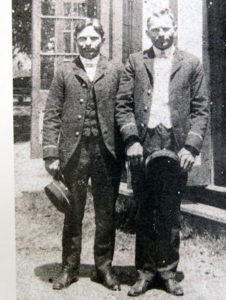
The Day the Flying Horses Came to Town
When most people mention Savin Rock — Giuliano’s Savin Rock Arcade on Beach Street comes to mind. That’s where THE carousel lived, which everyone simply called the Flying Horses. Its official name was PTC No. 21, short for Philadelphia Toboggan Company No. 21, and it first arrived at Savin Rock in 1912 as part of Fred Wilcox’s Long Pier. It might come as a surprise to learn that PTC No. 21 was only one of at least a dozen major carousels that once called Savin Rock home through the years.
Beginning as early as the 1870’s the first carousel at Savin Rock was a human-powered affair built by George Kelsey, owner of the West Haven Buckle Company, the New Haven & West Haven Horse Railroad that connected New Haven to Savin Rock, and a luxury hotel located on the corners of Beach and Grove streets called the Seaview. That carousel was soon replaced with a horse-powered version that became famous for two reasons. First, the horse had a fondness for chewing tobacco and it drew big crowds as both riders and spectators. The second reason was more chilling, since the flying horses played a role in the famous Jennie Cramer murder of 1881. That affair involved the boys of New Haven (yes, those Malleys, of the famed department store), who were accused of drugging a young lady with arsenic after taking her for countless rides on the carousel only to then panic when she overdosed. They threw her body into the LI Sound to make it look like she drowned. But that’s a story for another day.
In addition to the carousel and hotel, Kelsey oversaw the construction of the the Long Pier, which offered ferry service to Lighthouse Point and New Haven, as well as the Grove, complete with a large fountain and bandstand, where John Philip Sousa once performed. While some viewed the Grove as pleasant open space amid the bustling resort, others saw it as an opportunity knocking.
Two of those opportunists were young brothers from Brooklyn, NY, Timothy and Bartholomew Murphy. For these young entrepreneurs, Savin Rock was the perfect incubator for their fledgling carousel manufacturing and amusement concession Timothy and Bart Murphy sporting their carousel businesses. If the Murphy boys had their way, they planned on transforming Savin Rock into another Coney Island. It didn’t take long for them to find a local supporter. His name was George Cameron, who bought the Sea View Hotel, where the two young Irishmen took rooms in season beginning in 1906. The Golden Age of Savin Rock was about to unfold.
To be continued…
Guest Historian: Peter J. Malia
Author of Visible Saints: The Colonial History of West Haven, available from Barnes & Noble and www.connecicutpress.com